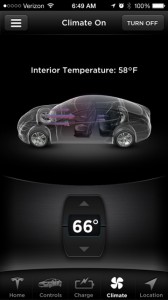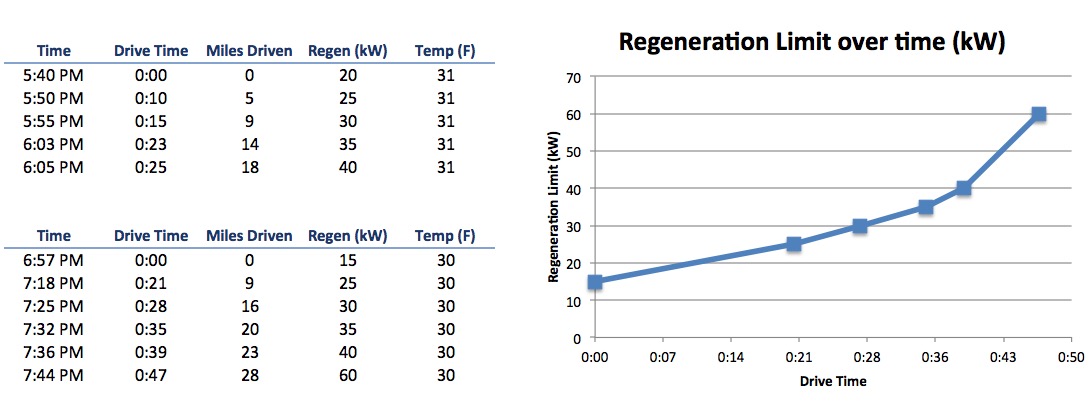News
Effects of Winter on Tesla Battery Range and Regen
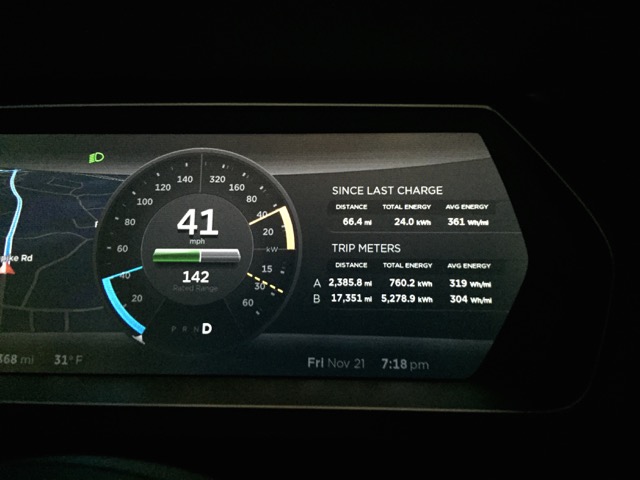
Winter conditions has begun to set in here in New England with temperatures not exceeding the 20’s. Thankfully I’ve already prepared my winter wheels and tires in advance so I’m not overly worried about the potential for snow, however I’m quickly learning the effects of winter on the battery and overall energy efficiency.
Cabin Temperature
The first order of business is making sure I’m comfortable when I get into the car each day. This means preheating the Model S cabin temperature through the Tesla App (if I happen to remember to) or, better yet, have it scheduled to automatically preheat via the VisibleTesla app.
My daily schedule looks something like this: VisibleTesla preheats the car 30 minutes before I enter and while it’s still plugged in from my overnight charge. This ensures I enter a warm car every morning with no affect on my range – the best of both worlds!
Leaving for work at the end of the day, however, is a bit more erratic so I usually use the Tesla App to preheat on an ad-hoc basis. I realize that this preheating will eat into my overall battery range, but I’m not overly concerned because I have plenty of range to spare even with a 100 mile commute each day. It’s well worth it for a little more comfort.
I enjoy turning on the air conditioner during the summer months but getting into a warm car in the dead of winter is even better!
Limited Regenerative Braking
Prior to the winter, the only times I have experienced limited regenerative braking (regen) was directly after performing range charges in anticipations of my Tesla road trip adventures. The Tesla battery does not have the capacity to receive additional energy (when at a 100% state of charge) thus it disables regenerative braking all together.
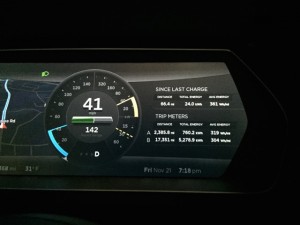 Winter months, however, bring a completely different experience with regen. When the Model S is cold it limits the ability to regen since the batteries need to be at an optimal temperature before it receives any additional charge.
Winter months, however, bring a completely different experience with regen. When the Model S is cold it limits the ability to regen since the batteries need to be at an optimal temperature before it receives any additional charge.
A dashed yellow line appears on the center display indicating that regenerative braking is limited. If you’ve been accustomed to driving with regen on, this new behaviour (with regen disabled) will feel and drive very differently.
I found myself quickly rolling towards the cars in front of me as I instinctively ignored the brakes and assumed that the car would just come to a gradual stop by letting go of the accelerator pedal. That obviously didn’t happen with regen limited. You’ll need to use your brakes so be careful not to “over press” it as you quickly adjust to driving with brakes again.
This winter-induced form of limited regeneration lasts for a very long. I wasn’t sure if the lack of regen was isolated to the weather conditions for that particular day so I decided to log my results over a larger sample of several days.
Here’s what I noticed about the effects of winter on Tesla’s regenerative braking:
- There appears to be a linear easing off of the “regen cap” through the first 30 minutes. At 0 miles, when the car is just started, the amount of regen is capped at 20 kW.
- 25 minutes into my drive, the regen cap is loosened to 40 kW.
As you can see from some of my data points, it took me over 45 minutes of driving (30 miles covered) before the regenerative braking behavior was back to normal — that’s almost my entire drive home!
I’ve been experimenting with various approaches to avoid the regen capping. One of which is timing my overnight charge so that it completes right at the time I’m about to leave for work. This ensures that the batteries are at a good temperature, by the time I begin driving, and with no regen cap in place. Timing it perfectly can be tricky.There’s been a few occasions where my charge completed earlier than expected and as a result the batteries cooled off before I got to drive.Here again VisibleTesla can help, but it’s an area that I wish Tesla would address directly —
add a feature to allow users to specify the END time for a charge as opposed to the start time. The Model S should calculate when charging begins based on the set end time.
I’ve been experimenting with ways to reduce the after-work limited regenerative braking occurrences but since there’s no charging infrastructure at my work, I can’t pre-warm the batteries. I’ve even tried warming up the cabin temperature in advance to see if this would have an impact on regenerative braking but unfortunately it doesn’t.
Higher Energy Use
Cold weather definitely affects energy use on the Model S. My tires, while great for winter, are less efficient — they’re not the low rolling resistance tires that came with the Model S. I’m also using extra energy for warming the cabin (despite my chilly 66 F year-round cabin temperature setting). The Model S is also using extra power when managing the battery temperature.
Prior to winter my average energy consumption was around 300-315 kWh/mi but now I’m averaging 350-365 kWh/mi or approximately 16% more energy used than summer months. I’m also using my brakes more during the winter, as a result of the limited regenerative braking, so that will also introduce more wear and tear.
One piece of advice from Tesla is to use seat heaters to warm yourself up over cabin heat. The seat heaters apply heat directly to your body and thus a more efficient use of energy. If you have your cabin temperature set at 72 F , try reducing it to 68 F and use your seat heaters to warm yourself up.
I’m sure I’ll be uncovering a lot more tips and interesting findings over the next few months especially as the snow storms start blowing in and temperatures dip into single digits! Stay tuned!

News
Tesla dominates in the UK with Model Y and Model 3 leading the way

Tesla is dominating in the United Kingdom so far through 2025, and with about two weeks left in the year, the Model Y and Model 3 are leading the way.
The Model Y and Model 3 are the two best-selling electric vehicles in the United Kingdom, which is comprised of England, Scotland, Wales, and Northern Ireland, and it’s not particularly close.
According to data gathered by EU-EVs, the Model Y is sitting at 18,890 units for the year, while the Model 3 is slightly behind with 16,361 sales for the year so far.
The next best-selling EV is the Audi Q4 e-tron at 10,287 units, lagging significantly behind but ahead of other models like the BMW i4 and the Audi Q6 e-tron.
GOOD NEWS 🇬🇧 Tesla is absolutely crushing the UK electric vehicle market in 2025 💥
The numbers are in, and the dominance is clear. With an impressive amount of 42,270 vehicles delivered year-to-date, the brand now commands a solid 9.6% market share of the total auto market 🆒… pic.twitter.com/dkiGX9kzd0
— Ming (@tslaming) December 18, 2025
The Model Y has tasted significant success in the global market, but it has dominated in large markets like Europe and the United States.
For years, it’s been a car that has fit the bill of exactly what consumers need: a perfect combination of luxury, space, and sustainability.
Both vehicles are going to see decreases in sales compared to 2024; the Model Y was the best-selling car last year, but it sold 32,610 units in the UK. Meanwhile, the Model 3 had reached 17,272 units, which will keep it right on par with last year.
Tesla sold 50,090 units in the market last year, and it’s about 8,000 units shy of last year’s pace. It also had a stronger market share last year with 13.2 percent of the sales in the market. With two weeks left in 2025, Tesla has a 9.6 percent market share, leading Volkswagen with 8 percent.
The company likely felt some impact from CEO Elon Musk’s involvement with the Trump administration and, more specifically, his role with DOGE. However, it is worth mentioning that some months saw stronger consumer demand than others. For example, sales were up over 20 percent in February. A 14 percent increase followed this in June.
News
Tesla Insurance officially expands to new U.S. state
Tesla’s in-house Insurance program first launched back in late 2019, offering a new way to insure the vehicles that was potentially less expensive and could alleviate a lot of the issues people had with claims, as the company could assess and repair the damage itself.
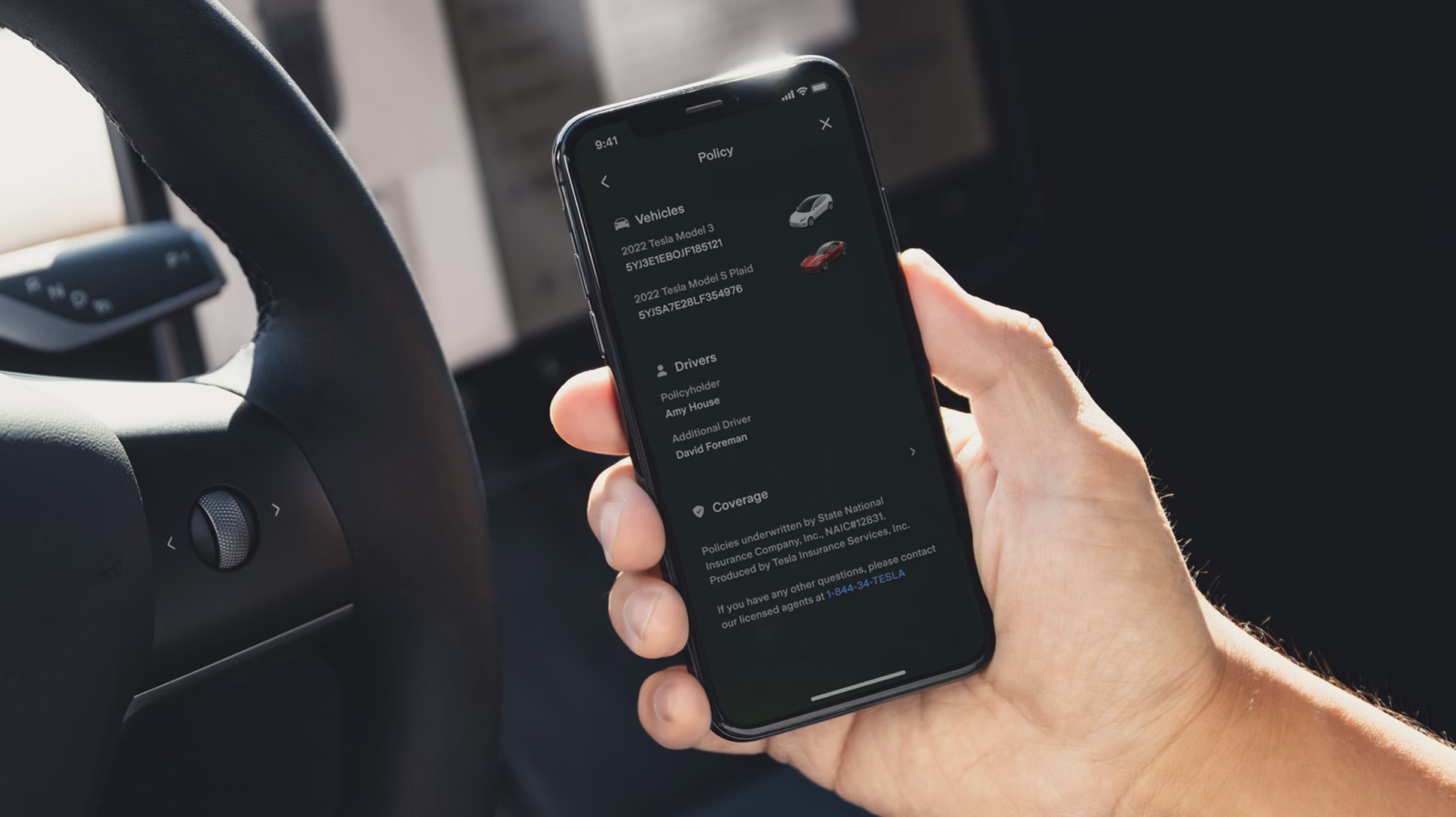
Tesla Insurance has officially expanded to a new U.S. state, its thirteenth since its launch in 2019.
Tesla has confirmed that its in-house Insurance program has officially made its way to Florida, just two months after the company filed to update its Private Passenger Auto program in the state. It had tried to offer its insurance program to drivers in the state back in 2022, but its launch did not happen.
Instead, Tesla refiled the paperwork back in mid-October, which essentially was the move toward initiating the offering this month.
BREAKING: Tesla Insurance has just officially launched in Florida.
This is the first new state to receive @Tesla Insurance in more than 3 years. In total, Tesla insurance is now available in 13 U.S. states (map in thread below of all the states).
Tesla Insurance in Florida uses… pic.twitter.com/bDwh1IV6gD
— Sawyer Merritt (@SawyerMerritt) December 17, 2025
Tesla’s in-house Insurance program first launched back in late 2019, offering a new way to insure the vehicles that was potentially less expensive and could alleviate a lot of the issues people had with claims, as the company could assess and repair the damage itself.
It has expanded to new states since 2019, but Florida presents a particularly interesting challenge for Tesla, as the company’s entry into the state is particularly noteworthy given its unique insurance landscape, characterized by high premiums due to frequent natural disasters, dense traffic, and a no-fault system.
Annual average premiums for Florida drivers hover around $4,000 per year, well above the national average. Tesla’s insurance program could disrupt this, especially for EV enthusiasts. The state’s growing EV adoption, fueled by incentives and infrastructure development, aligns perfectly with Tesla’s ecosystem.
Moreover, there are more ways to have cars repaired, and features like comprehensive coverage for battery damage and roadside assistance tailored to EVs address those common painpoints that owners have.
However, there are some challenges that still remain. Florida’s susceptibility to hurricanes raises questions about how Tesla will handle claims during disasters.
Looking ahead, Tesla’s expansion of its insurance program signals the company’s ambition to continue vertically integrating its services, including coverage of its vehicles. Reducing dependency on third-party insurers only makes things simpler for the company’s automotive division, as well as for its customers.
News
Tesla Full Self-Driving gets sparkling review from South Korean politician
“Having already ridden in an unmanned robotaxi, the novelty wasn’t as strong for me, but it drives just as well as most people do. It already feels like a completed technology, which gives me a lot to think about.”
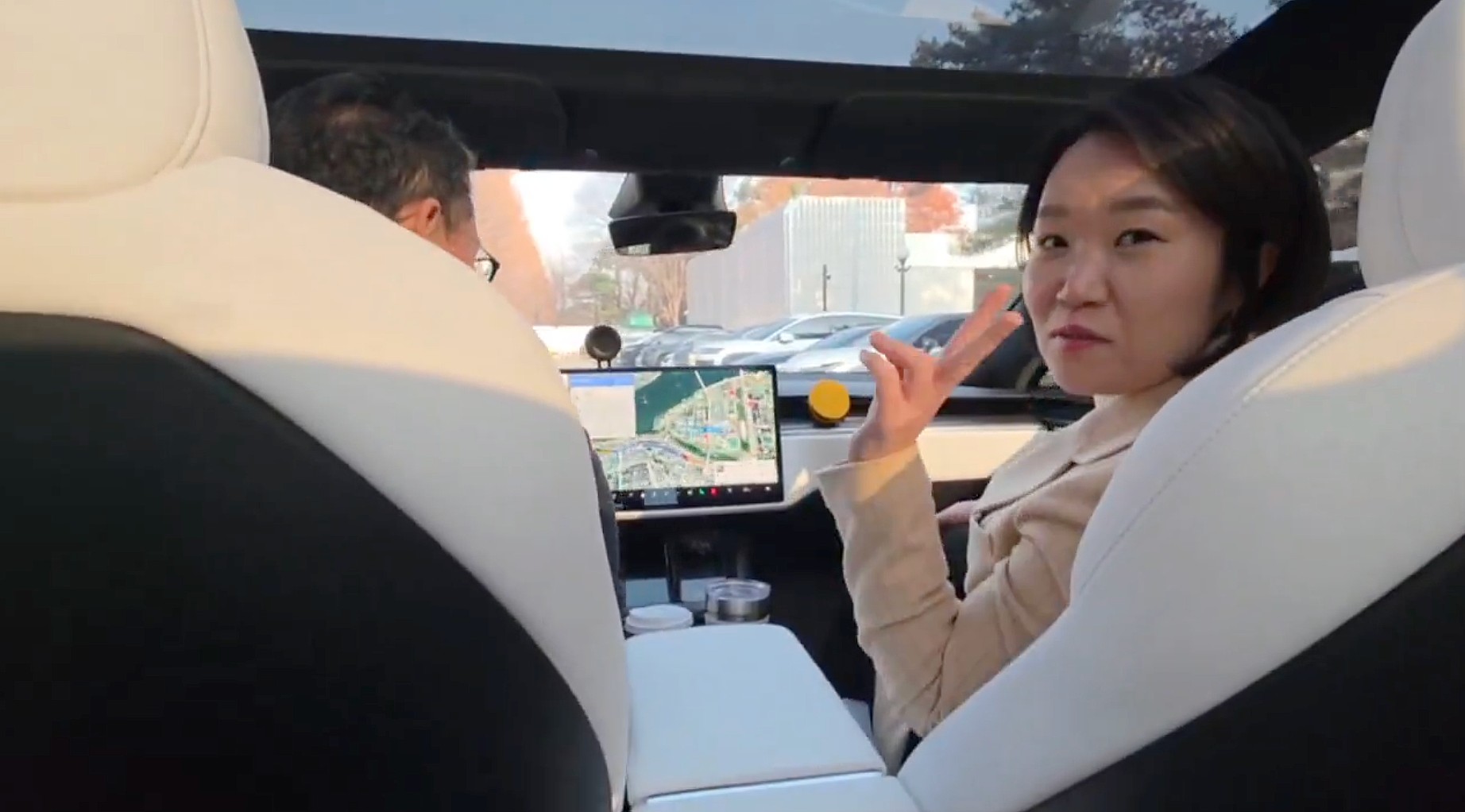
Tesla Full Self-Driving got its first sparkling review from South Korean politician Lee So-young, a member of the country’s National Assembly, earlier this week.
Lee is a member of the Strategy and Finance Committee in South Korea and is a proponent of sustainable technologies and their applications in both residential and commercial settings. For the first time, Lee was able to utilize Tesla’s Full Self-Driving technology as it launched in the country in late November.
Her thoughts on the suite were complimentary to the suite, stating that “it drives just as well as most people do,” and that “it already feels like a completed technology.”
드디어 오늘, 서울에서 테슬라 FSD 체험 했습니다.
JiDal Papa님의 모델S 협찬에 힘입어^^ 파파님 정말 감사합니다.
국회 -> 망원시장 -> 홍익대 -> 국회 복귀 코스였고요.
이미 무인 로보택시를 타봐서 그런지 신기함은
덜했지만, 웬만한 사람만큼 운전을 잘하네요.이미 완성된 기술이라고… pic.twitter.com/8pAidHBpRG
— 이소영 국회의원 (Soyoung Lee) (@im_soyounglee) December 17, 2025
Her translated post says:
“Finally, today I got to experience Tesla FSD in Seoul. Thanks to the Model S sponsored by JiDal Papa^^, I’m truly grateful to Papa. The route was from the National Assembly -> Mangwon Market -> Hongik University -> back to the National Assembly. Having already ridden in an unmanned robotaxi, the novelty wasn’t as strong for me, but it drives just as well as most people do. It already feels like a completed technology, which gives me a lot to think about. Once it actually spreads into widespread use, I feel like our daily lives are going to change a lot. Even I, with my license gathering dust in a drawer, don’t see much reason to learn to drive a manual anymore.”
Tesla Full Self-Driving officially landed in South Korea in late November, with the initial launch being one of Tesla’s most recent, v14.1.4.
It marked the seventh country in which Tesla was able to enable the driver assistance suite, following the United States, Puerto Rico, Canada, China, Mexico, Australia, and New Zealand.
It is important to see politicians and figures in power try new technologies, especially ones that are widely popular in other regions of the world and could potentially revolutionize how people travel globally.
